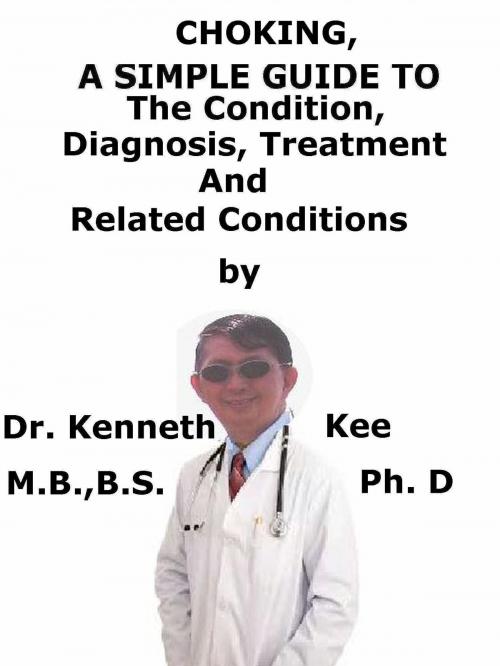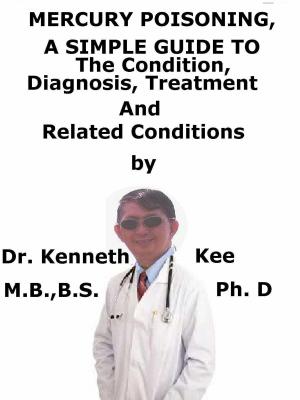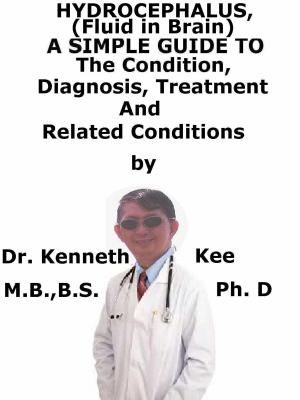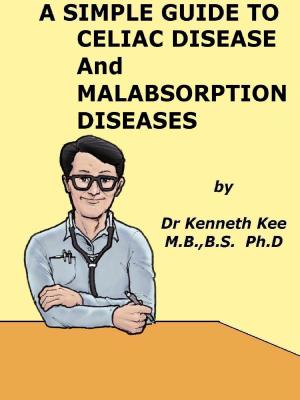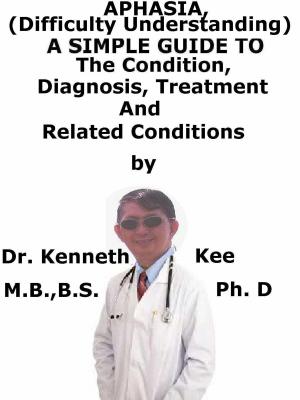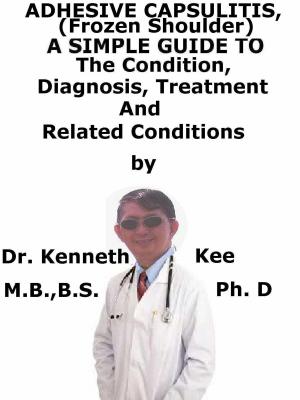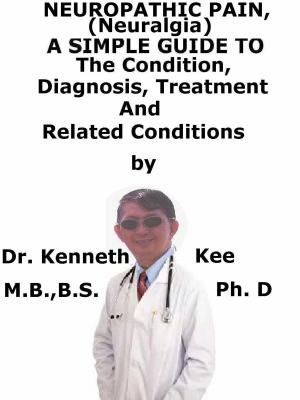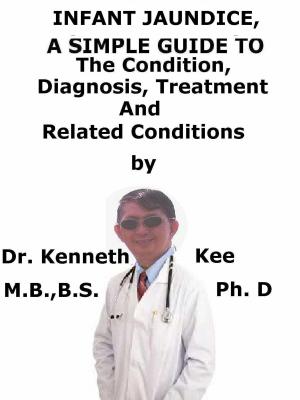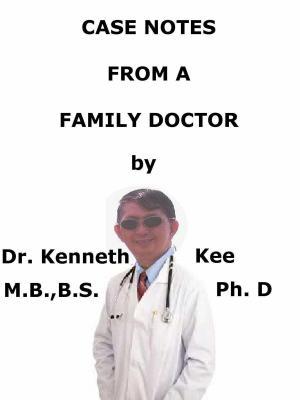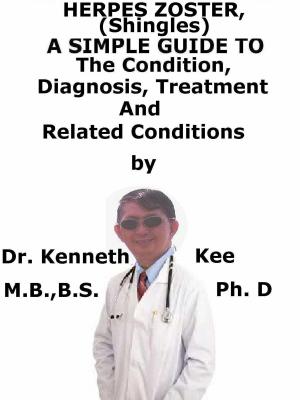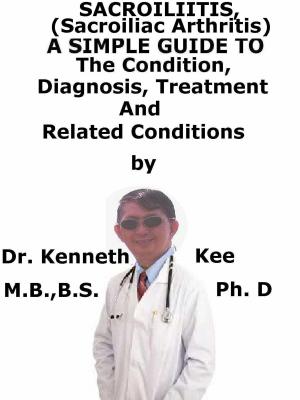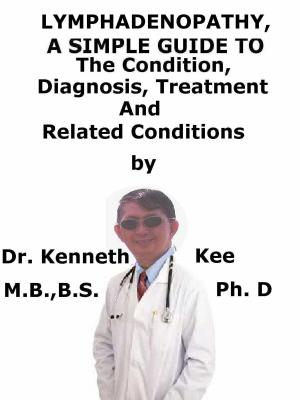Choking, A Simple Guide To The Condition, Diagnosis, Treatment And Related Conditions
Nonfiction, Health & Well Being, Medical, Specialties, Pulmonary & Thoracic, Health, Ailments & Diseases, Respiratory| Author: | Kenneth Kee | ISBN: | 9780463461204 |
| Publisher: | Kenneth Kee | Publication: | July 9, 2018 |
| Imprint: | Smashwords Edition | Language: | English |
| Author: | Kenneth Kee |
| ISBN: | 9780463461204 |
| Publisher: | Kenneth Kee |
| Publication: | July 9, 2018 |
| Imprint: | Smashwords Edition |
| Language: | English |
This book describes Choking, Diagnosis, Treatment and Related Conditions
Choking is a partial or complete obstruction of the airway that can be due to a foreign body (e.g., food, a bead, toy, etc.)
The respiratory distress may begin rapidly with cough.
There are frequently obvious signs in the early stage of airway obstruction such as labored, ineffective breathing until the person is not longer breathing (apneic).
Unconsciousness happens if the respiratory obstruction is not relieved
Causes
Choking results when a piece of food or object becomes blocked in the upper airway.
Many large and small objects become stuck just inside the trachea at the vocal cords.
In adults, choking frequently happens when food is not chewed properly.
While eating, talking or laughing may induce a piece of food to "go into the wrong pipe."
The normal swallowing mechanisms may be reduced if a person has been drinking alcohol or taking medicines and if the person has conditions such as Parkinson's disease.
In elderly adults, the danger factors for choking are increasing age, poor fitting dental appliances, and alcohol drinking.
In children, choking is frequently produced by chewing food incompletely, trying to eat large pieces of food or taking too much food at one time, or eating hard candy.
Children also tend to place small objects in their mouths, which may find their way lodged in their throat.
Choking hazards are nuts, pins, marbles, or coins.
Symptoms
If an adult is choking, you may see the following:
- Coughing or gagging
- Hand signals and panic (sometimes pointing to the throat)
- Sudden inability to talk
- Clutching the throat:
This response is the universal choking sign and a way of informing people around you that you are choking. - Wheezing
- Passing out
- Turning blue or cyanosis can be observed very early around the face, lips, and fingernail beds but other critical choking signs may be seen first.
The management of airway obstruction due to a foreign body is:
Adults: The Heimlich maneuver.
Children above 1 year of age: 5 abdominal thrusts (a children's version of the Heimlich maneuver
Infants under 1 year of age: 5 blows to the back (with the flat of the hand) and 5 abdominal thrusts (with 2 fingers on the upper abdomen).
- The treatment for a choking person who begins to turn blue or stops breathing depends on the person's age.
In adults and children above one year of age, abdominal thrusts (formerly referred to as the "Heimlich maneuver") should be tried.
The Heimlich maneuver is a thrust that produces an artificial cough which may be forceful enough to clear the airway.
- The quick, upward abdominal thrusts push the diaphragm upward very suddenly, making the chest cavity smaller resulting in rapidly pressing the lungs and forcing air out.
The rush of air out will force out any object which is causing the person to choke.
-
The child will be too small for abdominal thrusts to be successful.
-
The infant should be picked up by the legs and five back blows should be given, followed by five chest thrusts.
-
Be careful to hold the infant properly with the head angled down to let gravity help with clearing the airway.
-
Also always support the infant's head.
If the infant turns blue or does not responds, CPR should be done.
TABLE OF CONTENT
Introduction
Chapter 1 Choking
Chapter 2 Causes
Chapter 3 Symptoms
Chapter 4 Diagnosis
Chapter 5 Treatment
Chapter 6 Prognosis
Chapter 7 Dysphagia
Chapter 8 Heimlich Maneuver
Epilogue
This book describes Choking, Diagnosis, Treatment and Related Conditions
Choking is a partial or complete obstruction of the airway that can be due to a foreign body (e.g., food, a bead, toy, etc.)
The respiratory distress may begin rapidly with cough.
There are frequently obvious signs in the early stage of airway obstruction such as labored, ineffective breathing until the person is not longer breathing (apneic).
Unconsciousness happens if the respiratory obstruction is not relieved
Causes
Choking results when a piece of food or object becomes blocked in the upper airway.
Many large and small objects become stuck just inside the trachea at the vocal cords.
In adults, choking frequently happens when food is not chewed properly.
While eating, talking or laughing may induce a piece of food to "go into the wrong pipe."
The normal swallowing mechanisms may be reduced if a person has been drinking alcohol or taking medicines and if the person has conditions such as Parkinson's disease.
In elderly adults, the danger factors for choking are increasing age, poor fitting dental appliances, and alcohol drinking.
In children, choking is frequently produced by chewing food incompletely, trying to eat large pieces of food or taking too much food at one time, or eating hard candy.
Children also tend to place small objects in their mouths, which may find their way lodged in their throat.
Choking hazards are nuts, pins, marbles, or coins.
Symptoms
If an adult is choking, you may see the following:
- Coughing or gagging
- Hand signals and panic (sometimes pointing to the throat)
- Sudden inability to talk
- Clutching the throat:
This response is the universal choking sign and a way of informing people around you that you are choking. - Wheezing
- Passing out
- Turning blue or cyanosis can be observed very early around the face, lips, and fingernail beds but other critical choking signs may be seen first.
The management of airway obstruction due to a foreign body is:
Adults: The Heimlich maneuver.
Children above 1 year of age: 5 abdominal thrusts (a children's version of the Heimlich maneuver
Infants under 1 year of age: 5 blows to the back (with the flat of the hand) and 5 abdominal thrusts (with 2 fingers on the upper abdomen).
- The treatment for a choking person who begins to turn blue or stops breathing depends on the person's age.
In adults and children above one year of age, abdominal thrusts (formerly referred to as the "Heimlich maneuver") should be tried.
The Heimlich maneuver is a thrust that produces an artificial cough which may be forceful enough to clear the airway.
- The quick, upward abdominal thrusts push the diaphragm upward very suddenly, making the chest cavity smaller resulting in rapidly pressing the lungs and forcing air out.
The rush of air out will force out any object which is causing the person to choke.
-
The child will be too small for abdominal thrusts to be successful.
-
The infant should be picked up by the legs and five back blows should be given, followed by five chest thrusts.
-
Be careful to hold the infant properly with the head angled down to let gravity help with clearing the airway.
-
Also always support the infant's head.
If the infant turns blue or does not responds, CPR should be done.
TABLE OF CONTENT
Introduction
Chapter 1 Choking
Chapter 2 Causes
Chapter 3 Symptoms
Chapter 4 Diagnosis
Chapter 5 Treatment
Chapter 6 Prognosis
Chapter 7 Dysphagia
Chapter 8 Heimlich Maneuver
Epilogue
